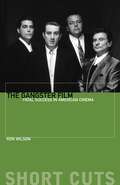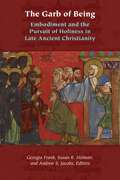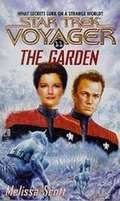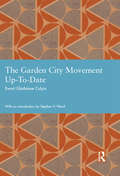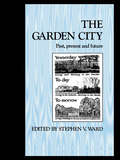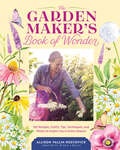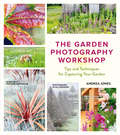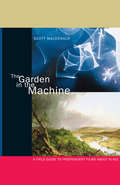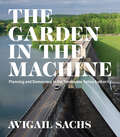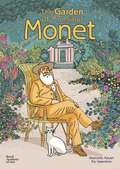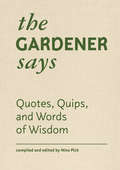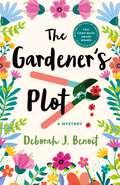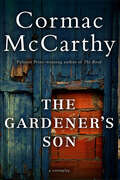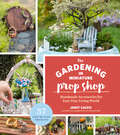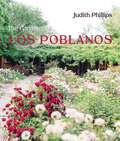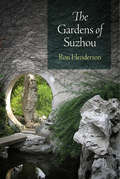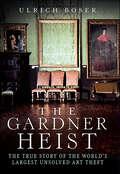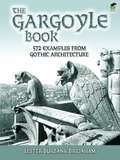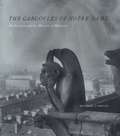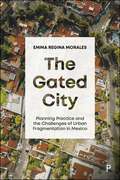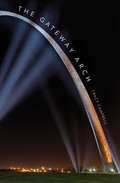- Table View
- List View
The Gangster Film: Fatal Success in American Cinema
by Ron WilsonExamines the gangster film in its historical context with an emphasis on the ways the image of the gangster has adapted and changed
The Gangster Film: Fatal Success in American Cinema (Short Cuts)
by Ron WilsonThis volume examines the gangster film in its historical context with an emphasis on the ways the image of the gangster has adapted and changed as a result of socio-cultural circumstances. From its origins in Progressive-era reforms to its use as an indictment of corporate greed, the gangster film has often provided a template for critiquing American ideas and values concerning individualism, success, and business acumen. The gangster genre has also been useful in critically examining race and ethnicity in American culture in terms of "otherness." Films studied include Musketeers of Pig Alley (1912), The Racket (1928), The Captive City (1952), The Godfather, Part Two (1974), Goodfellas (1990), and Killing Them Softly (2012).
The Gansey Knitting Sourcebook: 150 Stitch Patterns and 10 Projects for Gansey Knits
by Di Gilpin Sheila GreenwellGanseys are hardwearing sweaters traditionally knitted for fishermen in and around the British Isles. Today, the styling and history of ganseys is as popular as ever and this collection of stitch patterns and projects brings the history of ganseys to a new audience. Learn all about the techniques used for knitting ganseys with this comprehensive sourcebook from experts in the subject, Di Gilpin and Sheila Greenwell. Di and Sheila are knitwear designers and makers based in Scotland where they teach regular workshops on traditional gansey techniques. Discover all the techniques you need to make an authentic gansey sweater with their special features which were developed for warmth and comfort in what were often, harsh conditions out at sea. Ganseys were designed with a special under arm gusset and a shoulder seam which prevented chaffing and improved movement for the wearer even when the jumper got wet and heavy. The authors explain these techniques with step-by-step instructions and artworks so you can replicate these details in your own work. Another key element to the gansey is the stitch pattern which was specific to the local area and often had a symbolism beyond the pattern itself and, some hoped, would act as a charm to keep the fishermen safe while they were out at sea. This collection features a comprehensive directory of 150 gansey stitch patterns so you can choose your favourite designs and motifs and learn which patterns were important to the fishermen in different areas. There are also 10 patterns for garments and accessories so you can practise your skills. The projects include a child's traditional gansey sweater so you can try out your skills on a traditional sweater but on a small scale. There are also some contemporary takes on the traditional gansey using lighter weight yarn and design details: these include a beautiful sweater with a gansey yoke; a contemporary take on the fisherman's kep; a gansey stitch cowl; a pair of mittens and socks; and light linen tank top. The smaller projects such as the mittens and hats are great for practising your skills before you attempt one of the larger projects.
The Garb of Being: Embodiment and the Pursuit of Holiness in Late Ancient Christianity (Orthodox Christianity and Contemporary Thought)
by Georgia Frank, Susan R. Holman, and Andrew S. JacobsThis collection explores how the body became a touchstone for late antique religious practice and imagination. When we read the stories and testimonies of late ancient Christians, what different types of bodies stand before us? How do we understand the range of bodily experiences—solitary and social, private and public—that clothed ancient Christians? How can bodily experience help us explore matters of gender, religious identity, class, and ethnicity? The Garb of Being investigates these questions through stories from the Eastern Christian world of antiquity: monks and martyrs, families and congregations, and textual bodies.Contributors include S. Abrams Rebillard, T. Arentzen, S. P. Brock, R. S. Falcasantos , C. M. Furey, S. H. Griffith, R. Krawiec, B. McNary-Zak, J.-N. Mellon Saint-Laurent, C. T. Schroeder, A. P. Urbano, F. M. Young
The Garden (Star Trek #11)
by Melissa ScottDesperately in need of vital nutritional supplies, the crew of the USS VoyagerTM must risk dealing with an enigmatic race known as the Kirse, legendary for the bountiful crops of their world - and for their secretive ways. Despite Neelix's warnings, Captain Janeway leads an Away Team to the Kirse homeworld. But when the hostile Andirrim attack the Kirse, Janeway finds herself caught in a deadly situation. Forced to fight alongside the Kirse, Janeway and her crew can only hope that their strange, new allies are not more dangerous than their common foe.
The Garden City Movement Up-To-Date (Studies in International Planning History)
by Ewart Gladstone CulpinThis work was written and compiled by the then Secretary of the Garden Cities and Town Planning Association in 1913. It shows just how much the conception of the garden city had been broadened from Howard’s original texts. Indeed the Association’s own name had been broadened to add the newly emergent practice and theory of town planning to the original focus. Alongside the garden city, recognition is now given to the burgeoning numbers of garden suburbs and garden villages. Many examples of these are identified and briefly described, including many which are small and now little known, greatly adding to the interest of the publication. Even the underlying arguments for such developments differ. Alongside the more altruistic arguments in favour of reform, there are now those which explicitly emphasise the need to ensure a healthy race to maintain the Empire.
The Garden City: Past, present and future (Planning, History and Environment Series)
by Stephen WardThis examination of a phenomenon of 19th century planning traces the origins, implementation, international transference and adoption of the Garden City idea. It also considers its continuing relevance in the late 20th century and into the 21st century.
The Garden Maker's Book of Wonder: 162 Recipes, Crafts, Tips, Techniques, and Plants to Inspire You in Every Season
by Allison Vallin KostovickThe joy and wonder of a garden-inspired lifestyle is captured in this colorfully photographed, through-the-seasons sourcebook filled with recipes, gardening wisdom, craft and wellness projects, and nature-based activities. Each season in the garden brings new joy and fresh inspiration for connecting with the wonders of the natural world. In The Garden Maker's Book of Wonder, popular gardening lifestyle influencer Allison Vallin Kostovick (Finch + Folly) invites fans of cottagecore, gardening, and nature-based living to share her journey as she crafts, cooks, dreams, and creates. Drawing on decades of gardening experience, and illustrated with vibrant photography from her own home and garden, The Garden Maker's Book of Wonder offers sage advice on growing bountiful harvests of favorite vegetables, herbs, and flowers. All levels of gardeners, from dreamers to the experienced, will delight in the variety and creativity of Kostovick's projects, activities, and recipes for enjoying the magic and whimsy of the natural world—no matter what season. From planting a pollinator playground to building a rustic trellis from tree branches, cooking with freshly picked peas and mint to making a sweet viola tub soak, and growing a bird seed mix to crafting one-of-a-kind jewelry beads from the husks of the Job's Tears plant, the inventive ideas in this rich treasury are sure to make it a favorite to keep and to give to anyone who aspires to a more nature-connected lifestyle. This publication conforms to the EPUB Accessibility specification at WCAG 2.0 Level AA.
The Garden Photography Workshop: Expert Tips and Techniques for Capturing the Essence of Your Garden
by Andrea JonesLearn to take better garden photos! One of the most rewarding aspects of gardening is sharing its beauty, both physically with those who visit and virtually with those who only see it on a screen. But capturing a garden’s true essence is difficult, and often the moments worth sharing are ephemeral. In The Garden Photography Workshop, internationally known garden photographer Andrea Jones shares the trade secrets that make her photos sing. You’ll learn the basic photography skills and tips on using a range of camera equipment. Profiles of real gardens from around the world exemplify the most common problems a photographer can face, like harsh light, wet weather, and cramped spaces, along with advice and techniques for addressing specific concerns. We live in a photo-driven world, and this helpful guide is a complete tutorial for anyone who wants that world to be filled with beautiful images of gardens and plants.
The Garden in the Machine
by Scott MacdonaldThe Garden in the Machine explores the evocations of place, and particularly American place, that have become so central to the representational and narrative strategies of alternative and mainstream film and video. Scott MacDonald contextualizes his discussion with a wide-ranging and deeply informed analysis of the depiction of place in nineteenth- and twentieth-century literature, painting, and photography. Accessible and engaging, this book examines the manner in which these films represent nature and landscape in particular, and location in general. It offers us both new readings of the films under consideration and an expanded sense of modern film history. Among the many antecedents to the films and videos discussed here are Thomas Cole's landscape painting, Thoreau's Walden, Olmsted and Vaux's Central Park, and Eadweard Muybridge's panoramic photographs of San Francisco. MacDonald analyzes the work of many accomplished avant-garde filmmakers: Kenneth Anger, Bruce Baillie, James Benning, Stan Brakhage, Nathaniel Dorsky, Hollis Frampton, Ernie Gehr, Larry Gottheim, Robert Huot, Peter Hutton, Marjorie Keller, Rose Lowder, Marie Menken, J.J. Murphy, Andrew Noren, Pat O'Neill, Leighton Pierce, Carolee Schneemann, and Chick Strand. He also examines a variety of recent commercial feature films, as well as independent experiments in documentary and such contributions to independent video history as George Kuchar's Weather Diaries and Ellen Spiro's Roam Sweet Home. MacDonald reveals the spiritual underpinnings of these works and shows how issues of race, ethnicity, gender, and class are conveyed as filmmakers attempt to discover forms of Edenic serenity within the Machine of modern society. Both personal and scholarly, The Garden in the Machine will be an invaluable resource for those interested in investigating and experiencing a broader spectrum of cinema in their teaching, in their research, and in their lives.
The Garden in the Machine: Planning and Democracy in the Tennessee Valley Authority (Midcentury)
by Avigail SachsThe Tennessee Valley Authority was the largest single agency created under the auspices of the New Deal legislation. Until 1933, when the project was initiated, the Tennessee Valley was known romantically as "a region of untapped potential" and, less romantically, as one of the most impoverished and isolated areas of the country. The TVA was responsible for three large-scale environmental projects–the river, land, and power machines–but the project also had social, even utopian, goals. In service to the latter, the TVA put together a cadre of regional planners, architects, and landscape architects that Avigail Sachs calls the "atelier TVA." These professionals contributed to the design of the system of multipurpose dams, arranged visitor centers and scenic routes, built housing and communities (although both were segregated), and instigated a regional recreation industry. In addition to its planning and design history audience, this volume will be of interest to environmental historians and historians of the Progressive Era.
The Garden of Monsieur Monet
by Giancarlo Ascari ; Pia ValentinisThe book tells how the Impressionist artist arrived at his garden; about the bright Japanese prints he collected that inspired him; about his famous visitors; how he painted outdoors in all weathers; and about his gardeners, who had to leave Giverny to go to war.
The Gardener Says: Quotes, Quips, and Words of Wisdom (Quotes, Quips, and Words of Wisdom)
by Nina PickThe Gardener Says invites readers to a festive garden party where guests ranging from Gertrude Jekyll and Henry David Thoreau, to Michelle Obama and Michael Pollan share their insights and words of inspiration. Ranging from the humorous to the poignant, these quotes from gardeners, poets, philosophers, and landscape designers highlight both the joys and challenges of gardening—the exhaustion at the end of a long day's work, the satisfaction of seeing a flower blossom, the peace and happiness of time spent in quiet contemplation. A delightful hobby, a potent tool for ecological and social transformation, and a crucial reminder of our place in nature, gardening is, in the words of Mirabel Osler, the one occupation where "if you were to creep up behind someone at their work, you would find them smiling."
The Gardener's Plot: A Mystery
by Deborah J. BenoitA woman helps set up a community garden in the Berkshires, only to find a body in one of the plots on opening day.After life threw Maggie Walker a few curveballs, she’s happy to be back in the small, Berkshires town where she spent so much time as a child. Marlowe holds many memories for her, and now it also offers a fresh start. Maggie has always loved gardening, so it’s only natural to sign on to help Violet Bloom set up a community garden.When opening day arrives, Violet is nowhere to be found, and the gardeners are restless. Things go from bad to worse when Maggie finds a boot buried in one of the plots… and there’s a body attached to it. Suddenly, the police are looking for a killer and they keep asking questions about Violet. Maggie doesn’t believe her friend could do this, and she’s going to dig up the dirt needed to prove it.The Gardener’s Plot takes readers to the heart of the Berkshires and introduces amateur sleuth Maggie Walker in Deborah J. Benoit’s Minotaur Books/Mystery Writers of America First Crime Novel Award-winning debut.
The Gardener's Son: A Screenplay
by Cormac McCarthyThe first screenplay by the Pulitzer Prize–winning author of The Road tells the saga of rival families in post-Civil War South Carolina.Set in Graniteville, South Carolina, The Gardener’s Son is a tale of privilege and hardship, animosity and vengeance. The McEvoys, a poor family beset by misfortune, must work in the cotton mill owned by the Greggs. But when Robert McEvoy loses his leg in an accident—rumored to have been caused by his nemesis, James Gregg—the bitter young man deserts his job and family.Two years later, Robert returns. His mother is dying, and his father, the mill’s gardener, is confined indoors working the factory line. These intertwined events stoke the slow burning rage McEvoy has long carried, a fury that erupts in a terrible act of violence that ultimately consumes the Gregg family and his own.Made into an acclaimed film broadcast on PBS in 1976, The Gardener’s Son received two Emmy Award nominations and was screened at the Berlin and Edinburgh Film Festivals.
The Gardening in Miniature Prop Shop: Handmade Accessories for Your Tiny Living World
by Janit CalvoA not-so-mini trend The Gardening in Miniature Prop Shop is the next big thing for the crafters and gardeners already captivated by gardening small. Organized by playful themes—including gardens around the world, holidays, and fantasy gardens—it’s a fun-filled guide to creating one-of-a-kind gardens and the accessories that make them shine. Thirty-seven projects are included with fully illustrated, step-by-step instructions. For a Japanese garden, you will learn how to create a miniature sand garden. For a Halloween garden, you'll learn how to make a flying ghost and zombie. And for a space garden, you'll learn how to make a tiny space ship and alien. The Gardening in Miniature Prop Shop is for anyone enchanted by the whimsy of creating a tiny world.
The Gardens of Emily Dickinson
by Judith Farr Louise CarterIn this first substantial study of Emily Dickinson's devotion to flowers and gardening, Judith Farr seeks to join both poet and gardener in one creative personality. She casts new light on Dickinson's temperament, her aesthetic sensibility, and her vision of the relationship between art and nature, revealing that the successful gardener's intimate understanding of horticulture helped shape the poet's choice of metaphors for every experience: love and hate, wickedness and virtue, death and immortality. Gardening, Farr demonstrates, was Dickinson's other vocation, more public than the making of poems but analogous and closely related to it. Over a third of Dickinson's poems and nearly half of her letters allude with passionate intensity to her favorite wildflowers, to traditional blooms like the daisy or gentian, and to the exotic gardenias and jasmines of her conservatory. Each flower was assigned specific connotations by the nineteenth century floral dictionaries she knew; thus, Dickinson's association of various flowers with friends, family, and lovers, like the tropes and scenarios presented in her poems, establishes her participation in the literary and painterly culture of her day. A chapter, "Gardening with Emily Dickinson" by Louise Carter, cites family letters and memoirs to conjecture the kinds of flowers contained in the poet's indoor and outdoor gardens. Carter hypothesizes Dickinson's methods of gardening, explaining how one might grow her flowers today. Beautifully illustrated and written with verve, The Gardens of Emily Dickinson will provide pleasure and insight to a wide audience of scholars, admirers of Dickinson's poetry, and garden lovers everywhere.
The Gardens of Los Poblanos (New Century Gardens and Landscapes of the American Southwest)
by Judith PhillipsIn The Gardens of Los Poblanos, landscape designer and garden writer Judith Phillips recounts the history of these world-renowned gardens and demonstrates the ways in which the farm&’s owners, designers, and gardeners have influenced the evolution of this unique landscape. Phillips showcases how the changes in landscape style and content are driven by cultural expectations and climatic realities, and she discusses how the gardens of Los Poblanos have helped preserve the deep agrarian roots of the village of Los Ranchos de Albuquerque. Although plants are always a focus for Phillips, she demonstrates how gardens are more than plants and how plants are much more than mere fillers of garden space.
The Gardens of Suzhou (Penn Studies in Landscape Architecture)
by Ron HendersonSuzhou, near Shanghai, is among the great garden cities of the world. The city's masterpieces of classical Chinese garden design, built from the eleventh through the nineteenth centuries, attract thousands of visitors each year and continue to influence international design. In The Gardens of Suzhou, landscape architect and scholar Ron Henderson guides visitors through seventeen of these gardens. The book explores UNESCO world cultural heritage sites such as the Master of the Nets Garden, Humble Administrator's Garden, Lingering Garden, and Garden of the Peaceful Mind, as well as other lesser-known but equally significant gardens in the Suzhou region.Unlike the acclaimed religious and imperial gardens found elsewhere in Asia, Suzhou's gardens were designed by scholars and intellectuals to be domestic spaces that drew upon China's rich visual and literary tradition, embedding cultural references within the landscapes. The elements of the gardens confront the visitor: rocks, trees, and walls are pushed into the foreground to compress and compact space, as if great hands had gathered a mountainous territory of rocky cliffs, forests, and streams, then squeezed it tightly until the entire region would fit into a small city garden.Henderson's commentary opens Suzhou's gardens, with their literary and musical references, to non-Chinese visitors. Drawing on years of intimate experience and study, he combines the history and spatial organization of each garden with personal insights into their rockeries, architecture, plants, and waters. Fully illustrated with newly drawn plans, maps, and original photographs, The Gardens of Suzhou invites visitors, researchers, and designers to pause and observe astonishing works from one of the world's greatest garden design traditions.
The Gardner Heist: The True Story of the World's Largest Unsolved Art Theft
by Ulrich Boser“Boser cracks the cold case of the art world’s greatest unsolved mystery.”— Vanity FairOne museum, two thieves, and the Boston underworld: the riveting story of the 1990 Gardner Museum robbery, the largest unsolved art theft in history. Perfect for fans of the Netflix series This is a Robbery: The World's Biggest Art Heist!Shortly after midnight on March 18, 1990, two men broke into the Isabella Stewart Gardner Museum in Boston and committed the largest art heist in history. They stole a dozen masterpieces, including one Vermeer, three Rembrandts, and five Degas. But after thousands of leads, hundreds of interviews, and a $5 million reward, not a single painting has been recovered. Worth as much as $500 million, the missing masterpieces have become the Holy Grail of the art world and their theft one of the nation’s most extraordinary unsolved mysteries.Art detective Harold Smith worked the theft for years, and after his death, reporter Ulrich Boser decided to pick up where he left off. Traveling deep into the art underworld, Boser explores Smith’s unfinished leads and comes across a remarkable cast of characters, including a brilliant rock ‘n’ roll art thief and a golden-boy gangster who professes his innocence in rhyming verse. A tale of art and greed, of obsession and loss, The Gardner Heist is as compelling as the stolen masterpieces themselves.
The Gargoyle Book: 572 Examples from Gothic Architecture
by Ralph Adams Cram Lester Burbank BridahamAmid the soaring grandeur of arches and spires lurks a more down-to-earth architectural flourish: the grinning head of a gargoyle. Singly and clustered, these intriguing creatures form as distinctive an element of Gothic architecture as the flying buttress. Nowhere are they more prominent than along the walls of French cathedrals, and this magnificently illustrated volume prowls the ramparts of those medieval buildings to discover hundreds of authentic gargoyle carvings.According to tradition, the gargoyles were posted as sentries, to ward off malevolent spirits and to remind parishioners of the evil beyond the church doors. Author Lester Burbank Bridaham takes a more optimistic view. Noting the stone guardians' whimsical nature, he discusses the artisanal ingenuity involved in their creation. He also points out how they represented a rare sense of freedom in the Middle Ages, in terms of public satire and unbridled artistic enthusiasm. As this book reveals, the timeless appeal of the gargoyle--whether symbolic, spiritual, decorative, or fanciful--continues to captivate the imagination.
The Gargoyles of Notre Dame: Medievalism and the Monsters of Modernity
by Michael CamilleMost of the seven million people who visit the cathedral of Notre Dame in Paris each year probably do not realize that the legendary gargoyles adorning this medieval masterpiece were not constructed until the nineteenth century.
The Gargoyles of Notre-Dame: Medievalism and the Monsters of Modernity
by Michael CamilleMost of the seven million people who visit the cathedral of Notre Dame in Paris each year probably do not realize that the legendary gargoyles adorning this medieval masterpiece were not constructed until the nineteenth century. The first comprehensive history of these world-famous monsters, The Gargoyles of Notre-Dame argues that they transformed the iconic thirteenth-century cathedral into a modern monument. Michael Camille begins his long-awaited study by recounting architect Eugène Viollet-le-Duc’s ambitious restoration of the structure from 1843 to 1864, when the gargoyles were designed, sculpted by the little-known Victor Pyanet, and installed. These gargoyles, Camille contends, were not mere avatars of the Middle Ages, but rather fresh creations—symbolizing an imagined past—whose modernity lay precisely in their nostalgia. He goes on to map the critical reception and many-layered afterlives of these chimeras, notably in the works of such artists and writers as Charles Méryon, Victor Hugo, and photographer Henri Le Secq. Tracing their eventual evolution into icons of high kitsch, Camille ultimately locates the gargoyles’ place in the twentieth-century imagination, exploring interpretations by everyone from Winslow Homer to the Walt Disney Company. Lavishly illustrated with more than three hundred images of its monumental yet whimsical subjects, The Gargoyles of Notre-Dame is a must-read for historians of art and architecture and anyone whose imagination has been sparked by the lovable monsters gazing out over Paris from one of the world’s most renowned vantage points.
The Gated City: Planning Practice and the Challenges of Urban Fragmentation in Mexico
by Emma Regina MoralesThe book tells the story of the proliferation of gated communities and the privatisation of public life and public space in Mexico over the last three decades. Drawing on research from Lomas de Angelópolis in Puebla, one of the largest gated communities in the world, Emma Regina Morales explores why such fortified spaces have proved popular with middle-class households. Weaving together the multiple influences of housing policy, predatory financial markets, and an increased fear of crime, the book sets out how policy makers and planners can improve decision-making and provide non-gated solutions to urban anxiety.
The Gateway Arch: A Biography (Icons of America)
by Tracy CampbellThis &“fascinating, engaging&” history of St. Louis&’s monument to American expansion reveals a story of greed, discrimination, and community displacement (NextSTL.com). Rising to a triumphant height of 630 feet, the Gateway Arch is one of the world&’s most widely recognized structures and attracts millions of tourists to St. Louis every year. Envisioned in 1947 but not completed until the mid-1960s, its story is one of innovation and greed; civic pride and backroom deals. Weaving together social, political, and cultural perspectives, historian Tracy Campbell uncovers the complicated and troubling history of this iconic symbol. In this revealing account, Campbell shows that the so-called Gateway to the West was the scheme of shrewd city leaders who were willing to steal an election, destroy historic buildings, and drive out communities in order to make downtown St. Louis more profitable. Campbell also tells the human story of the architect Eero Saarinen, whose prize-winning design brought him acclaim but also charges of plagiarism, and who didn&’t live to see the completion of his vision.
